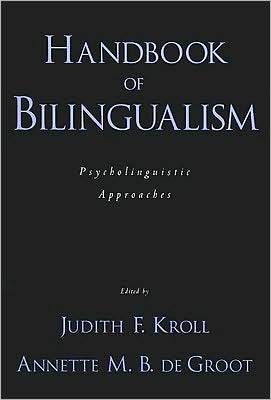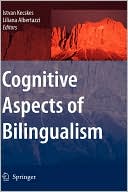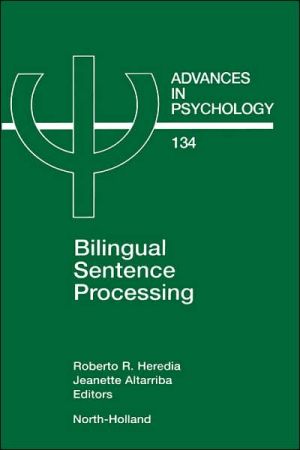Handbook of Bilingualism: Psycholinguistic Approaches
How is language acquired when infants are exposed to multiple language input from birth and when adults are required to learn a second language after early childhood? How do adult bilinguals comprehend and produce words and sentences when their two languages are potentially always active and in competition with one another? What are the neural mechanisms that underlie proficient bilingualism? What are the general consequences of bilingualism for cognition and for language and thought? This...
Search in google:
How is language acquired when infants are exposed to multiple language input from birth and when adults are required to learn a second language after early childhood? How do adult bilinguals comprehend and produce words and sentences when their two languages are potentially always active and in competition with one another? What are the neural mechanisms that underlie proficient bilingualism? What are the general consequences of bilingualism for cognition and for language and thought? This handbook will be essential reading for cognitive psychologists, linguists, applied linguists, and educators who wish to better understand the cognitive basis of bilingualism and the logic of experimental and formal approaches to language science.
IAcquisitionIntroduction to part I : acquisition31The learning of foreign language vocabulary92Early bilingual acquisition : focus on morphosyntax and the separate development hypothesis303A unified model of language acquisition494Phonology and bilingualism685What does the critical period really mean?886Interpreting age effects in second language acquisition1097Processing constraints on L1 transfer1288Models of monolingual and bilingual language acquisition154IIComprehensionIntroduction to part II : comprehension1739Bilingual visual word recognition and lexical access17910Computational models of bilingual comprehension20211The representation of cognate and noncognate words in bilingual memory : can cognate status be characterized as a special kind of morphological relation?22612Bilingual semantic and conceptual representation25113Ambiguities and anomalies : what can eye movements and event-related potentials reveal about second language sentence processing?268IIIProduction and controlIntroduction to part III : production and control28514Selection processes in monolingual and bilingual lexical access28915Lexical access in bilingual production30816Supporting a differential access hypothesis : code switching and other contact data32617Language selection in bilinguals : mechanisms and processes34918Automaticity in bilingualism and second language learning37119Being and becoming bilingual : individual differences and consequences for language production389IVAspects and implications of bilingualismIntroduction to part IV : aspects and implications of bilingualism41120Consequences of bilingualism for cognitive development41721Bilingualism and thought43322Simultaneous interpreting : a cognitive perspective45423Clearing the cobwebs from the study of the bilingual brain : converging evidence from laterality and electrophysiological research48024What can functional neuroimaging tell us about the bilingual brain?49725The neurocognition of recovery patterns in bilingual aphasics51626Models of bilingual representation and processing : looking back and to the future531






